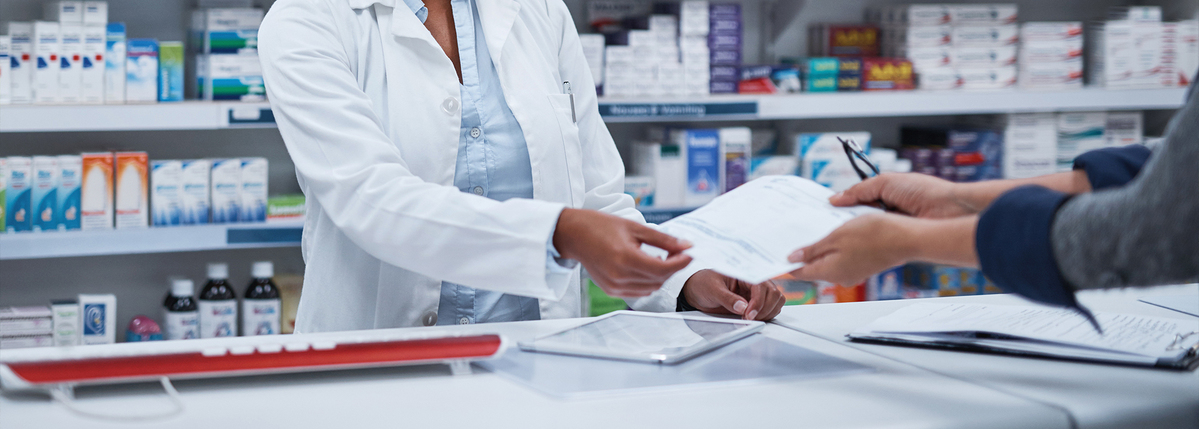How to Get Labs + Tests Done for Telehealth Visits
Written by: Ginger Vieira
2 minute read
May 27, 2021
Here are 3 ways to get those routine yet important lab tests done so you can discuss the results at your next telehealth appointment.
Telehealth appointments have made it incredibly safe and easy to keep in touch with your healthcare team throughout the ongoing pandemic, especially for those of us who have a higher risk for more severe symptoms of COVID-19.
But there’s one thing telehealth is missing: the easy access to your routine blood work.
Your A1c, cholesterol, triglycerides, kidney function—and much more depending on other health conditions you’re managing—all depend on regular visits to the lab.
Here are three ways to get those routine yet important lab tests done so you can discuss the results at your next telehealth appointment.
Schedule through your doctor’s office for the nearest lab
Even if you aren’t visiting your doctor in real life for your appointment, you can likely still make an appointment with the blood draw lab affiliated with your clinic.
Many labs have changed from being a “walk-in” set-up to scheduling every blood draw appointment to minimize the number of people sitting in the waiting room.
In fact, for many labs, it’s a faster and easier experience because you aren’t waiting in a long line. Instead, you’ll show up at your scheduled time and be in and out of the lab within 15 minutes.
Use an independent lab service or walk-in clinic
Independent labs, like Quest Diagnostics, are located throughout the country, and they will work with your doctor’s office to set up an appointment for you. Quest Diagnostics are also integrated into many urgent care clinics, so don’t assume there isn’t one in your area just because you don’t see a building with its name.
To schedule your routine lab work with an organization like Quest Diagnostics, you’ll call your doctor’s office first and ask them to send the lab order with the specifics of what you need done.
Then you’ll call Quest Diagnostics and schedule an appointment to come in for lab work or simply show up at your earliest convenience if they aren’t requiring scheduled appointments.
Use an At-Home Testing Kit
There are many at-home testing kits available these days. Some will actually give you results at home while others will require you to mail the kit in to be processed.
In terms of the cost of at-home testing kits, talk to your health insurance company, too, to determine if you can get it covered or use existing funds in your FSA or HSA. If you have an FSA or HSA, you’ll probably be able to pay for it using those funds.
Here are just a few options:
- At-home A1c Test: These at-home A1c test kits are fast and easy. There are a few brands to choose from these days, but they all cost about $63 to $65. While they won’t be quite as accurate as a lab test, they are accurate enough to tell you if your A1c has changed dramatically.
- EverlyWell: EverlyWell has a huge range of testing kits, including A1c, thyroid function, cholesterol and more. The kits vary in cost, and you’ll mail them back to EverlyWell to be processed. Keep in mind that the results can take a few weeks.
- Let’s Get Checked: Like the above, Let’s Get Checked offers a huge range of testing kits, including A1c thyroid function, and more. The kits vary in cost, and you’ll mail them back to Let’s Get Checked. Results will be sent to your online account within two to five days after the kit arrives in their lab.
Telehealth appointments certainly haven’t made lab work any easier, but they are an important part of your routine care! Without the results of lab work, your healthcare team doesn’t know how well your medications are working or new issues that might need to be addressed. Getting your lab work done somehow is a critical part of managing your diabetes. Talk to your healthcare provider about the best options for you!
This content was made possible with support from Lilly Diabetes. Beyond Type 1 maintains full editorial control of all content published on our platforms.

Author
Ginger Vieira
Ginger Vieira is an author and writer living with type 1 diabetes, celiac disease, fibromyalgia and hypothyroidism. She’s authored a variety of books, including “When I Go Low” (for kids), “Pregnancy with Type 1 Diabetes,” and “Dealing with Diabetes Burnout.” Before joining Beyond Type 1 as digital content manager, Ginger wrote for Diabetes Mine, Healthline, T1D Exchange, Diabetes Strong and more! In her free time, she is jumping rope, scootering with her daughters, or walking with her handsome fella and their dog.
Related Resources

You may need to switch your type 2 medications at some point in the year....
Read more

Getting the medications, services and supplies you need to manage your type 2 diabetes should...
Read more

Sadly, not all type 2 diabetes medications, devices and services are covered by health insurance...
Read more

